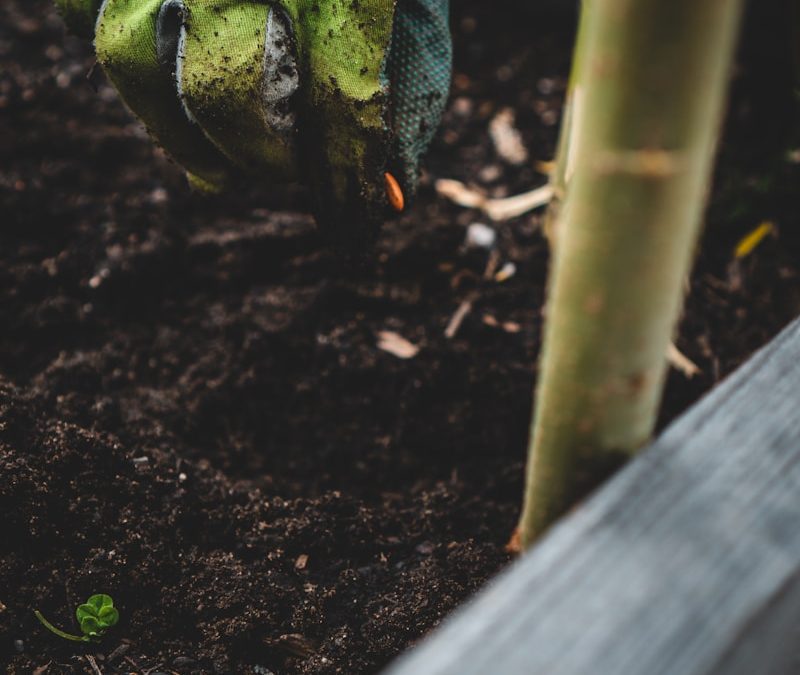Companion planting, a practice traditionally associated with outdoor gardening, involves planting different species of plants close to each other to enhance growth, deter pests, and improve yield. When applied to indoor gardens, this technique can be just as effective, even within the confined spaces of pots, planters, and indoor grow systems. This article will delve into the benefits, best practices, and specific plant pairings that thrive in indoor environments, helping you create a harmonious and productive indoor garden.
Contents
The Benefits of Companion Planting in Indoor Gardens
Enhanced Growth and Yield
One of the primary benefits of companion planting is the improvement of plant growth and yield. Certain plants release nutrients into the soil that can benefit their neighbors. For instance, legumes like beans and peas fix nitrogen in the soil, making it more fertile for other plants like leafy greens and tomatoes.
In an indoor garden, where space is limited, maximizing the potential of each plant is crucial. By pairing plants that complement each other, you can ensure that your indoor garden remains healthy and productive. For example, planting basil with tomatoes not only saves space but also enhances the flavor of the tomatoes while helping to repel insects.
Natural Pest Control
Indoor gardens, though protected from many of the pests found outdoors, are not immune to infestations. Companion planting can help mitigate this issue by naturally deterring pests. Some plants emit scents that repel harmful insects, while others attract beneficial insects that prey on pests.
For example, planting marigolds alongside your indoor vegetable plants can help deter aphids, whiteflies, and nematodes. Similarly, mint can repel ants and aphids, making it an excellent companion for various indoor plants.
Efficient Use of Space
Indoor gardening often involves limited space, making it essential to optimize every inch of available growing area. Companion planting allows you to make the most of your space by pairing plants that grow well together and even support each other physically. For example, tall plants like corn can provide support for climbing plants like beans, while low-growing plants like squash or lettuce can act as ground cover, reducing weeds and retaining soil moisture.
This approach not only maximizes space but also creates a more diverse and resilient garden ecosystem, which can be particularly beneficial in an indoor environment where conditions can be more controlled yet limited.
Improved Soil Health
Companion planting contributes to healthier soil by reducing the need for chemical fertilizers and pesticides. Plants like clover and vetch can be used as cover crops to add organic matter to the soil, enhancing its structure and fertility. Additionally, deep-rooted plants like carrots can help break up compacted soil, improving aeration and water penetration.
In an indoor garden, where soil health can quickly degrade due to the confined environment, these benefits are invaluable. By rotating companion plants and incorporating cover crops, you can maintain the vitality of your indoor garden’s soil over time.
Best Practices for Companion Planting Indoors
Choosing the Right Plants
The success of companion planting hinges on selecting the right plant combinations. When choosing plants for your indoor garden, consider their growth habits, nutrient needs, and compatibility with each other. Here are some key factors to keep in mind:
Growth Rate and Size: Pair plants with similar growth rates and sizes to prevent one plant from overshadowing or outcompeting the other. For instance, pairing a fast-growing herb like cilantro with a slow-growing plant like rosemary may not be ideal.
Light and Water Requirements: Ensure that your companion plants have similar light and water needs. Pairing a sun-loving plant with a shade-tolerant one can lead to suboptimal growth for both.
Nutrient Needs: Some plants are heavy feeders, while others are light feeders. Pairing a heavy feeder like tomatoes with a nitrogen-fixing plant like beans can help balance nutrient levels in the soil.
Creating Microclimates
Indoor gardens benefit from microclimates—small areas within your growing space that have slightly different conditions than the surrounding area. Companion planting can help create these microclimates, optimizing conditions for certain plants.
For example, placing taller plants or plants with broad leaves near more delicate, shade-loving plants can create a cooler, shaded area that mimics a forest understory. This approach is particularly useful in indoor gardens where light sources are limited and need to be strategically utilized.
Rotating Plant Pairings
Even in an indoor garden, crop rotation is essential to prevent soil depletion and pest buildup. Rotating your companion plant pairings helps ensure that the soil remains fertile and that pests do not become a persistent problem.
For example, after growing a heavy feeder like tomatoes in a pot, you might rotate to a nitrogen-fixing plant like peas the next season to replenish the soil. This practice can be applied even in small containers by simply changing the plants you grow in them each season.
Monitoring Plant Health
Regularly monitoring the health of your plants is crucial in an indoor garden where space is limited, and problems can quickly spread. Keep an eye on how well your companion plants are doing together. If one plant seems to be struggling while another thrives, it might be a sign that they are not compatible.
Common signs to watch for include yellowing leaves, stunted growth, or an increase in pests. Adjust your plant pairings as needed to ensure that all plants in your indoor garden are healthy and thriving.
Specific Companion Planting Combinations for Indoor Gardens
Herbs and Vegetables
Herbs are a great addition to any indoor garden, providing not only culinary benefits but also companionship to vegetables. Here are some effective herb and vegetable pairings:
Basil and Tomatoes: Basil enhances the flavor of tomatoes and helps repel whiteflies, mosquitoes, and aphids. This classic pairing is ideal for indoor gardens, where space is at a premium.
Parsley and Peppers: Parsley can improve the growth of peppers and attract beneficial insects like hoverflies and ladybugs, which help control aphids.
Chives and Carrots: Chives can deter pests that target carrots, such as carrot flies. In turn, carrots help break up the soil, making it easier for chives to grow.
Flowers and Vegetables
Flowers aren’t just for looks; they can play a vital role in the health of your indoor vegetable garden:
Marigolds and Anything: Marigolds are known for their ability to repel a variety of pests, including nematodes, aphids, and whiteflies. Planting marigolds near any vegetable in your indoor garden can provide a natural form of pest control.
Nasturtiums and Cucumbers: Nasturtiums are a trap crop, meaning they attract pests like aphids away from cucumbers. They also improve the flavor and growth of cucumbers, making them a perfect pair.
Calendula and Beans: Calendula, also known as pot marigold, attracts pollinators and beneficial insects that can help beans thrive indoors.
Vegetables and Vegetables
Pairing vegetables with each other can also yield great results in an indoor garden:
Radishes and Lettuce: Radishes grow quickly and can be harvested before lettuce matures, allowing you to use the same space for two crops. Additionally, radishes can help break up the soil for lettuce roots.
Carrots and Onions: Carrots and onions are a classic combination, as onions can repel carrot flies, and carrots can help aerate the soil for onion roots.
Beans and Spinach: Beans fix nitrogen in the soil, which can benefit spinach, a plant that thrives on nitrogen-rich soil. This pairing is especially effective in indoor gardens where soil fertility is a concern.
Fruits and Herbs
Even small fruiting plants can benefit from companion planting indoors:
Strawberries and Borage: Borage is known to improve the flavor of strawberries and repel common garden pests like aphids and spider mites. It also attracts pollinators, which can help increase fruit production.
Blueberries and Thyme: Thyme helps repel pests like worms and weevils that can damage blueberries. It also requires similar acidic soil conditions, making them a good pair.
Citrus Trees and Lavender: Lavender helps repel pests like moths and fleas, which can be beneficial for indoor citrus trees. Both plants also thrive in sunny, well-drained conditions.
Common Mistakes in Companion Planting Indoors
Overcrowding
One of the most common mistakes in indoor companion planting is overcrowding. While it’s tempting to fit as many plants as possible into a small space, this can lead to competition for light, water, and nutrients, ultimately stunting growth. It’s important to ensure each plant has enough space to grow and access to the resources it needs.
Ignoring Light and Water Requirements
Another mistake is pairing plants with vastly different light and water needs. For example, pairing a drought-tolerant herb like rosemary with a moisture-loving plant like mint can result in one plant thriving at the expense of the other. Always consider the environmental needs of your plants when planning your indoor garden.
Lack of Rotation
Even in an indoor garden, failing to rotate crops or plant pairings can lead to soil degradation and increased pest problems. Ensure you are regularly changing your plant combinations and replenishing the soil with organic matter to keep your indoor garden healthy.
Not Monitoring Plant Health
Finally, not paying close attention to how your plants are interacting can lead to missed signs of incompatibility. Regularly check your plants for signs of distress and be prepared to adjust your pairings if necessary.
Conclusion: Building a Thriving Indoor Garden with Companion Planting
Companion planting is a powerful technique that can transform your indoor garden into a thriving, self-sustaining ecosystem. By carefully selecting plant pairings that complement each other, you can enhance growth, deter pests, improve soil health, and make efficient use of your space.
Whether you’re growing herbs, vegetables, fruits, or flowers, there’s a companion planting strategy that can help you get the most out of your indoor garden. Remember to consider the specific needs of your plants, monitor their health, and rotate your plantings to maintain a balanced and productive garden.


